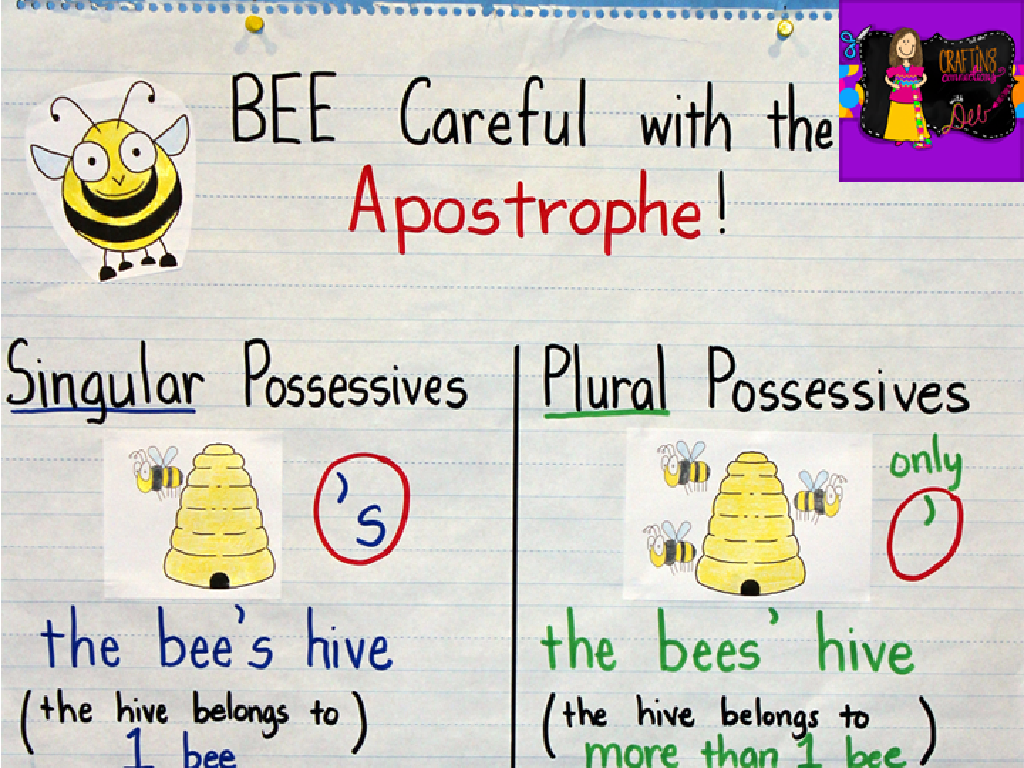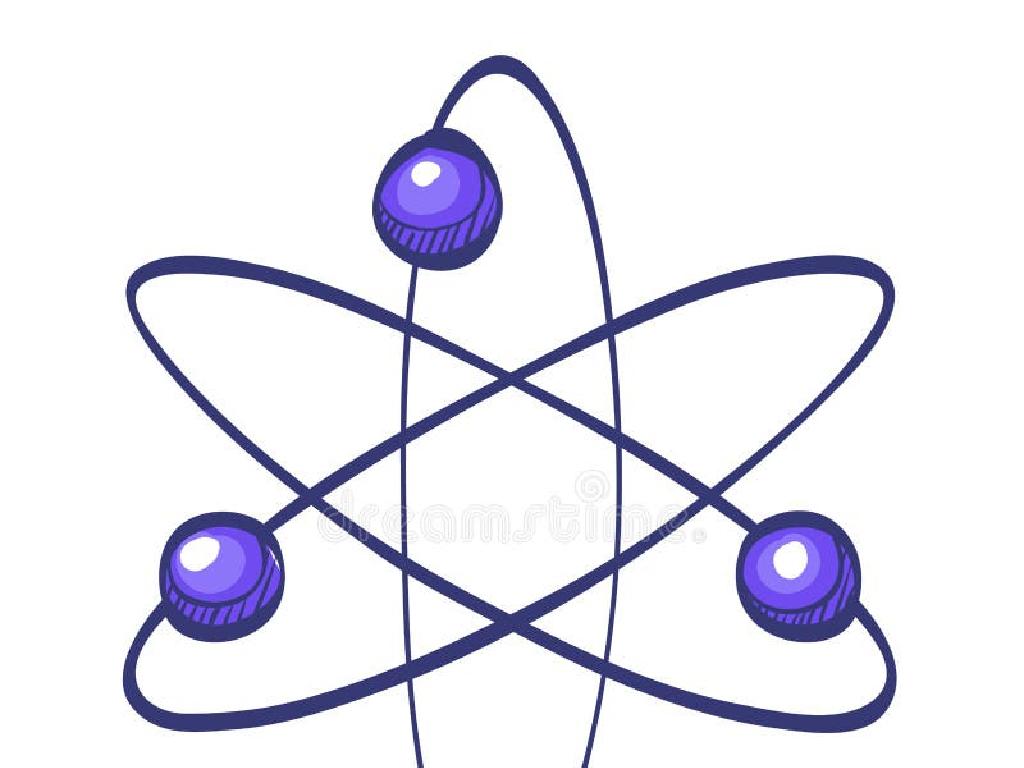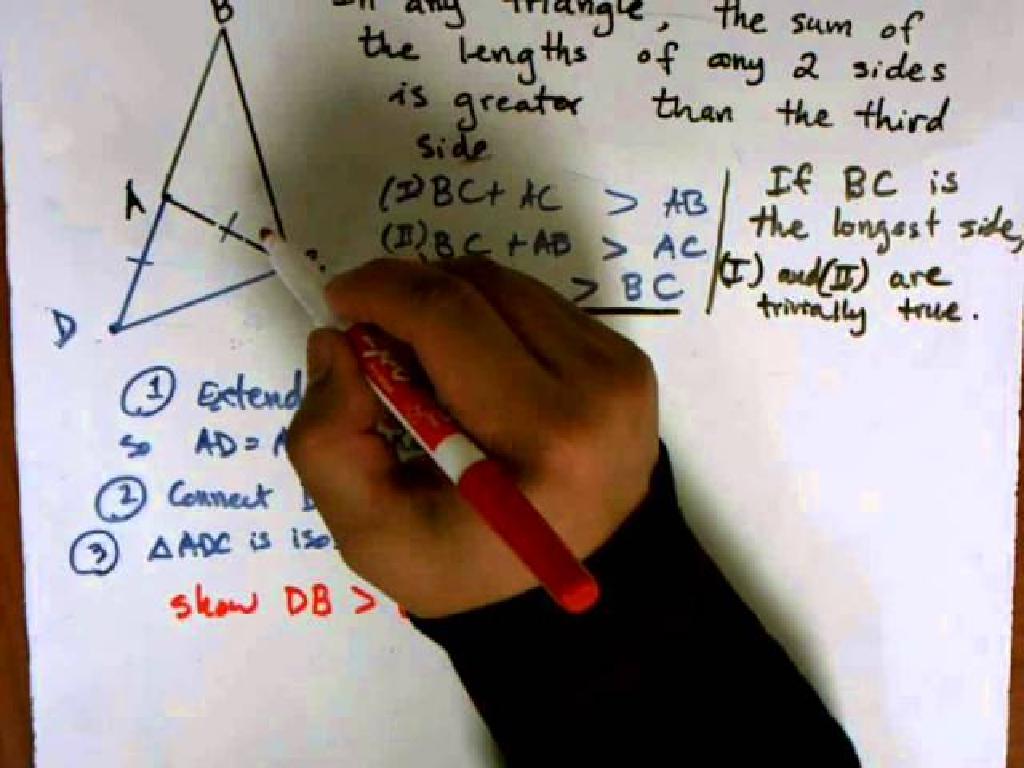The Judicial Branch
Subject: Social studies
Grade: Sixth grade
Topic: Government
Please LOG IN to download the presentation. Access is available to registered users only.
View More Content
Exploring the Judicial Branch
– Overview of Government Branches
– Role of the Judicial Branch
– Interprets laws & ensures justice
– Judicial Branch & Fairness
– Ensures laws are applied fairly to all
– Impact on Society
|
This slide introduces the Judicial Branch within the context of the three branches of government. Begin by explaining the separation of powers and the checks and balances system. Emphasize the role of the Judicial Branch in interpreting laws and upholding the Constitution, ensuring that justice is served. Discuss why a fair judicial system is crucial for a functioning democracy and how it impacts society by protecting rights and freedoms. Encourage students to think about how laws affect their daily lives and the importance of having a branch dedicated to fairness and equality under the law.
Exploring the Judicial Branch
– One of three government branches
– Alongside Executive and Legislative branches
– Interprets the nation’s laws
– Decides how laws apply in cases
– The Supreme Court’s role
– Highest authority in Judicial Branch
– Ensures justice under law
|
This slide introduces the Judicial Branch, explaining its place as one of the three pillars of the US government, alongside the Executive and Legislative branches. Emphasize the role of the Judicial Branch in interpreting laws, which involves reviewing and applying laws to individual court cases. Highlight the Supreme Court as the highest court, which has the final say on legal matters and ensures that justice is served according to the Constitution. Use examples like a court deciding on a law’s fairness or the Supreme Court making landmark decisions that affect the whole country. Encourage students to think about how these interpretations can impact their daily lives.
The Supreme Court’s Role in Government
– Supreme Court’s function
– It’s the highest court, interpreting laws.
– Selection of Justices
– Justices are nominated by the President and confirmed by the Senate.
– Landmark Supreme Court cases
– Examples: Brown v. Board of Education, Roe v. Wade.
– Cases’ impact on society
– These decisions can change legal practices and societal norms.
|
The Supreme Court is the pinnacle of the Judicial Branch, with the power to interpret the Constitution and federal laws. Its Justices, appointed for life, are chosen for their expertise and judgment. Discuss the process of nomination and confirmation, emphasizing the checks and balances system. Highlight famous cases like Brown v. Board of Education, which ended racial segregation in schools, and Roe v. Wade, which addressed women’s reproductive rights. These cases illustrate the Court’s profound influence on American law and society. Encourage students to think about how these landmark decisions continue to affect their lives today.
Exploring Lower Courts in the Judicial Branch
– Types of lower courts
– District courts handle trials; appeals courts review cases.
– Case progression in courts
– Cases start at district level, may advance to appeals.
– Judges and juries’ roles
– Judges oversee legal process; juries decide verdicts.
– Significance of lower courts
|
This slide introduces students to the structure and function of lower courts within the Judicial Branch. Emphasize the distinction between district courts, which are the first level of federal courts where trials are held, and appeals courts, which review decisions made by lower courts. Explain how a case can move from district court to an appeals court if the decision is contested. Discuss the critical roles judges and juries play in the judicial process, with judges managing the courtroom and legal proceedings, while juries are responsible for determining the outcome of trials based on evidence presented. Highlight the importance of lower courts as the foundation of the judicial system, where most federal cases begin and are resolved.
The Power of Judicial Review
– What is Judicial Review?
– The Supreme Court’s authority to examine laws and declare them unconstitutional.
– Marbury vs. Madison case
– The 1803 landmark case that established the concept of Judicial Review.
– Impact on balance of power
– It ensures that no branch of government becomes too powerful.
– Judicial Review in action
|
This slide introduces the concept of Judicial Review, a cornerstone of the United States legal system. Judicial Review allows the Supreme Court to interpret the Constitution and nullify any laws that are in conflict with it. The Marbury vs. Madison case is significant as it was the first time the Supreme Court used this power, setting a precedent for future legal decisions. This process is crucial for maintaining a system of checks and balances, ensuring that the legislative and executive branches do not exceed their constitutional authority. When discussing Judicial Review in action, provide current or historical examples where the Supreme Court has used its power to affect legislation or executive actions.
Checks and Balances: The Judicial Branch
– Judicial checks on branches
– Can declare laws or actions unconstitutional
– Examples of checks in action
– Supreme Court case Brown v. Board of Education ended segregation
– Democracy relies on balance
– Prevents any branch from gaining too much power
– Encouraging fair governance
|
This slide aims to explain the concept of checks and balances, with a focus on how the Judicial Branch exercises this power over the Legislative and Executive branches. By having the authority to declare laws or actions unconstitutional, the Judicial Branch ensures that all laws adhere to the Constitution. Historical examples, like the Brown v. Board of Education case, demonstrate the Judicial Branch’s role in promoting justice and equality. The concept of checks and balances is fundamental to a functioning democracy as it maintains a balance of power and prevents any one branch from becoming too dominant. This system is crucial for upholding the rule of law and ensuring fair governance. Encourage students to think of other examples where the Judicial Branch has acted to check the powers of the other branches.
Class Activity: Understanding Courts Through a Mock Trial
– Conduct a mock trial in class
– Assign court roles to students
– Roles include judge, lawyers, jury, witnesses, and defendant
– Discuss the trial process
– Learn steps from opening statements to the final verdict
– Reflect on the verdict
– Discuss how the jury reached their decision and its impact
|
This interactive class activity is designed to give students a hands-on understanding of the judicial branch by simulating a court trial. Students will be assigned various roles, allowing them to actively engage with the material and learn about the responsibilities of each position within a courtroom. The activity will cover all phases of a trial, including opening statements, witness testimonies, cross-examinations, closing arguments, and the delivery of a verdict. After the mock trial, lead a class discussion to reflect on the process and the outcome. This will help students to better grasp the complexities of legal proceedings and the importance of the judicial branch in upholding the law. Possible variations of the activity could include trying different cases or having students switch roles to experience different aspects of the trial process.






